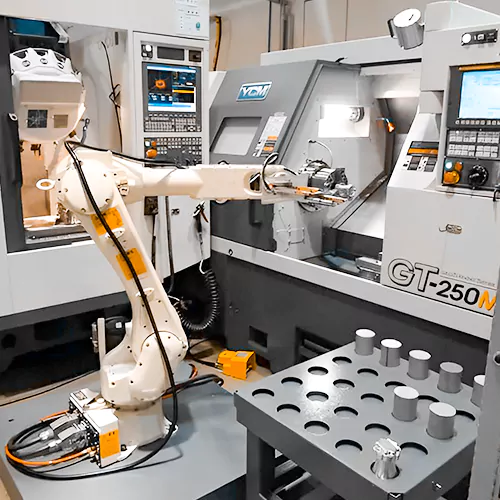Injection molding is a manufacturing process widely used for producing plastic parts in large volumes. It involves injecting molten material into a mold to form desired shapes. To improve efficiency, precision, and safety, many factories are now integrating robotic assistance into their injection molding operations.
Role of Robots in Injection Molding
Robots play various critical roles in injection molding facilities, including:
Part Removal and Placement
Robots are commonly used to extract finished parts from molds once the molding cycle is complete. This speeds up production and prevents damage to parts caused by manual handling.Sprue and Runner Separation
After part ejection, robots can separate sprues and runners from molded parts, streamlining post-processing.Insert Loading
In insert molding, robots place metal or other components into the mold before injection, ensuring consistent positioning and improving cycle time.Inspection and Quality Control
Vision-guided robots inspect parts for defects, dimensions, and consistency, allowing for real-time quality assurance.Assembly and Packaging
Post-molding, robots can assemble components or directly package finished products, reducing the need for human intervention.
Benefits of Robotic Integration
Increased Efficiency
Robots can operate continuously with high repeatability, significantly reducing cycle times and downtime.Improved Safety
Automation minimizes the need for human operators in hazardous areas, such as near hot molds and moving machinery.Consistency and Quality
Robotic systems reduce variability and improve part consistency, leading to fewer defects and reduced waste.Labor Cost Reduction
While initial investment is high, robots reduce long-term labor costs and dependence on skilled operators.Scalability
Robotic systems are easily reprogrammable, allowing for rapid adaptation to new molds, materials, or product designs.
Types of Robots Used
Cartesian Robots (Gantry): Often used for pick-and-place tasks due to their precision and speed.
Six-Axis Robots: Provide flexibility for complex tasks such as insert loading and multi-directional movements.
SCARA Robots: Ideal for fast, repetitive operations like assembly and packaging.
Challenges and Considerations
High Initial Investment: Automation requires capital expenditure for robots, integration, and training.
Maintenance and Downtime: Robots require regular servicing to prevent breakdowns.
Workforce Upskilling: Employees need training to manage and troubleshoot robotic systems.
Integration Complexity: Customizing robotic solutions for specific molds or processes can be time-consuming.
Future Trends
AI and Machine Learning: Integration of AI for predictive maintenance, adaptive quality control, and process optimization.
Collaborative Robots (Cobots): Designed to work safely alongside humans, increasing flexibility and reducing guarding requirements.
Digital Twins and Simulation: Use of virtual models to simulate robotic movements and mold interactions for improved design and efficiency.
Conclusion
Robotic assistance in injection molding factories is transforming the industry by enhancing productivity, precision, and safety. While challenges exist, the long-term advantages make automation a compelling investment for manufacturers seeking to remain competitive in a fast-evolving market.


